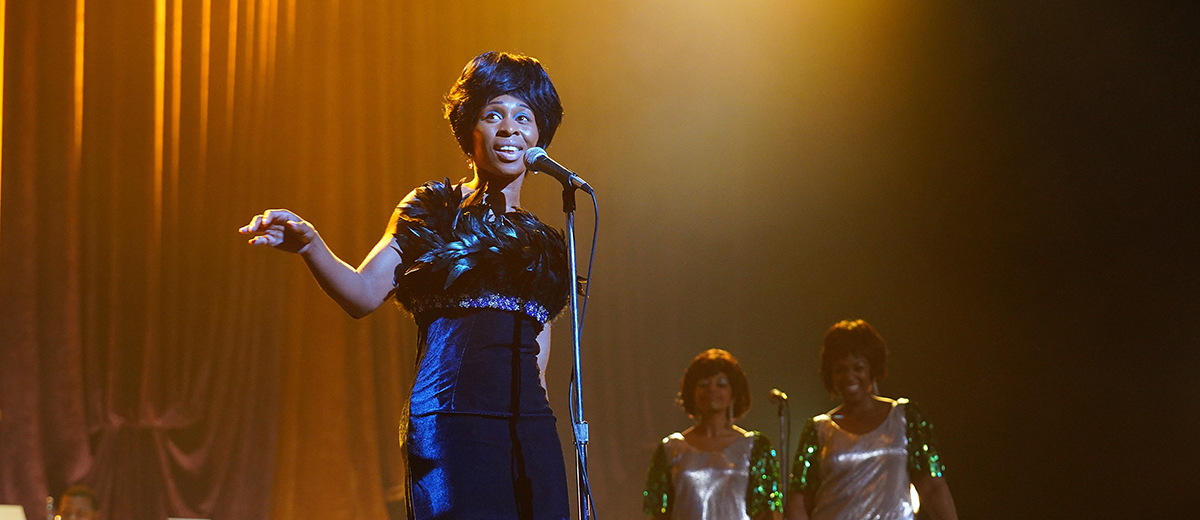There never was (or will be) another artist like Aretha Franklin, as National Geographic Channel’s third season of Genius makes clear.
by Matt Hurwitz / Photos and Framegrabs Courtesy of Richard DuCree / National Geographic Channel
Veteran TV director Anthony Hemingway recalls a moment shooting inside Atlanta’s historic Fox Theatre, for National Geographic Channel’s Genius: Aretha, when Local 600 Steadicam Operator Michael Alba, SOC, was circling Cynthia Erivo (portraying Aretha Franklin) onstage. “The entire crew just stood there mesmerized, with their jaws dropped, watching and listening to her deliver,” Hemingway says. “Everyone is captivated, every moment we’re shooting with her.”
Erivo – fresh off double 2019 Oscar nomination for playing another famously admired black woman, Harriet Tubman (www.icgmagazine.com/web/the-real-life-superhero/) – embodies all aspects of the “Queen of Soul” in this eight-part series, originally slated to debut over four consecutive nights in late May, but pushed forward to an unspecified premiere date due to COVID-19. Shot by Director of Photography Kevin McKnight, ASC, who has worked extensively with Hemingway over the years, the visual approach, consistent with the past two seasons of Genius, was to capture the inner journey of the artist, both personally and professionally.
As McKnight describes: “We keep the camera within close proximity of our characters so that there is no wall between them and the audience. I do a lot of close-up work. I’m not big on long lenses, poking in as a third-person perspective.”
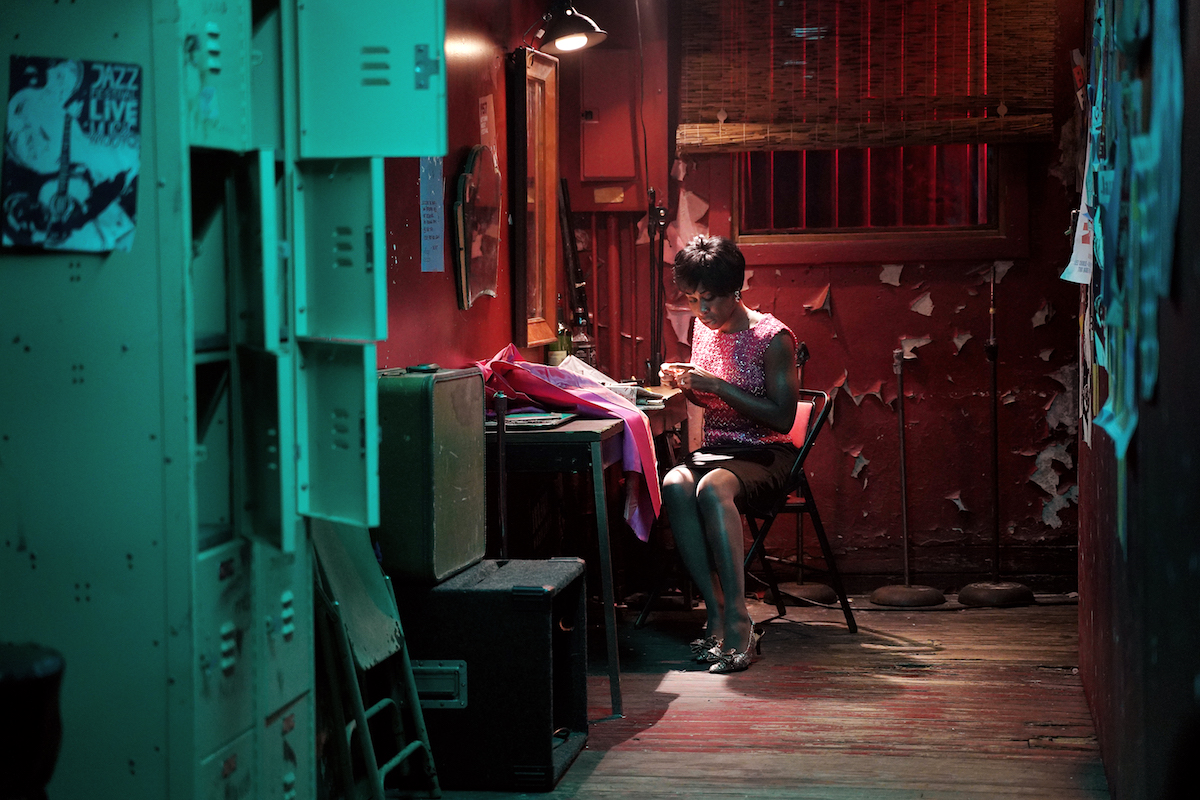
Genius: Aretha began shooting last December in Atlanta at Eagle Rock Studios. Location filming included historic churches and theaters. “There aren’t too many older theaters around Atlanta anymore, maybe just three or four,” notes production designer Tim Galvin. “We found them all.”
McKnight’s Guild team included A-camera/Steadicam Operator Alba, B-camera Operator Michael Hartzel, A-camera 1st AC Taylor Fenno, B-camera 1st AC Ross Davis and Chief Lighting Technician Tully McCulloch, who first worked with McKnight on Killers (shot in Atlanta in 2010). McKnight says Alba possesses a “great sensibility” for telling a story with the camera. “I move the camera a whole lot with Anthony, and on day one we had big Steadicam, 360 moves, and Michael brought it,” he offers.
Alba pours similar praise on his focus puller, Fenno, who apprenticed under Shelly Johnson, ASC, as did McKnight. “Taylor comes from a competitive sports background, and he holds himself to a very high standard,” Alba describes. “If he’s not on focus, he’s tough on himself about it, and it’s on the very next take. He’s amazing – he’s like a machine.”
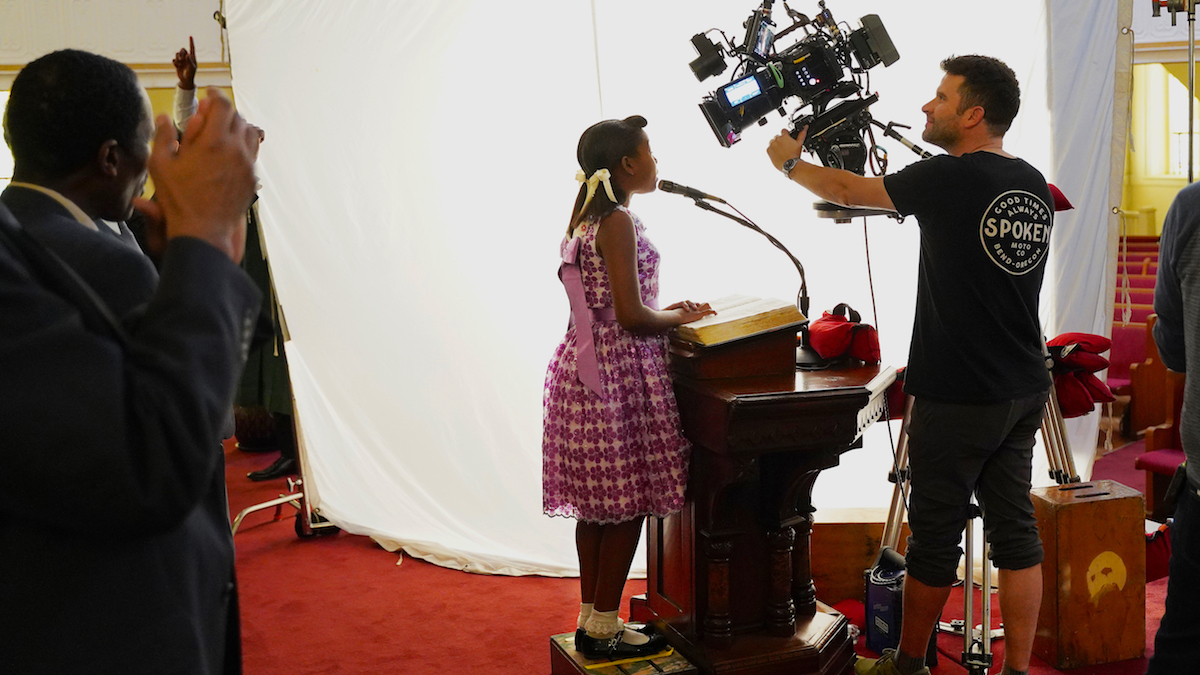
As for the machine used to capture, it was ARRI’s popular ALEXA LF (large-format) system – two LF Minis used for A-camera and Steadicam capture, and a standard LF (allowing for 60-fps frame rate) used for B-camera.
“Having that large-format sensor brings so much more to the image on every setup,” the Atlanta-based Hartzel offers. “The capture is more immersive and dimensional than what we were getting out of Super 35 sensors.” Fenno adds that the LF Mini is “small and lightweight, which makes it incredibly versatile. And they’ve improved the design, moving the card slot to the smart side of the camera, instead of the rear, so it’s easier to load and build-out.”
Large-format capture does introduce some challenges. “You have to be delicate with the frame,” Alba explains. “When you shoot with a longer lens, you’re getting a wider field of view than a 35-millimeter full-frame, so any errors, like shakes or wobbles, are amplified; and on Steadicam, your horizon is more amplified. There’s also a razor edge for focus [for the assistants], so Taylor just has to nail it, and he’s great at it.”
McKnight rounded out the setup with ARRI’s Signature Prime lenses, which, he says, when tested, “have a dimensionality that other lenses just don’t have.” Fenno agrees, adding that “[the Signature Primes] have this artistic sharpness, which is different than the technical sharpness of the Zeiss Supreme Primes. There’s a rounder quality to the focus falloff that elicits a filmic look. And the way they’re engineered, due to their coatings, you don’t have a lot of bounce-back within the lens elements, or focus breathing.”
The limited depth of field of the 47- or 58-mm Signature Primes, in combination with the large sensor, also allowed McKnight and Hemingway to direct the audience’s attention within the frame. “It’s something Anthony and I have been using for five years – selective focus, to always guide the audience, rather than just giving them one plane of focus,” McKnight explains. “The background melts away, and the ears and shoulders fall off on a close-up of a face. We tell them where we want them to look.” Characters walk in and out of focus, which McKnight says is like “a reveal, as opposed to just having one plane where everything’s in focus.” Cameras and lenses were provided by Keslow Camera, whom McKnight describes as “incredibly supportive. If I have some crazy idea,” he smiles, “they manufacture it for me.”
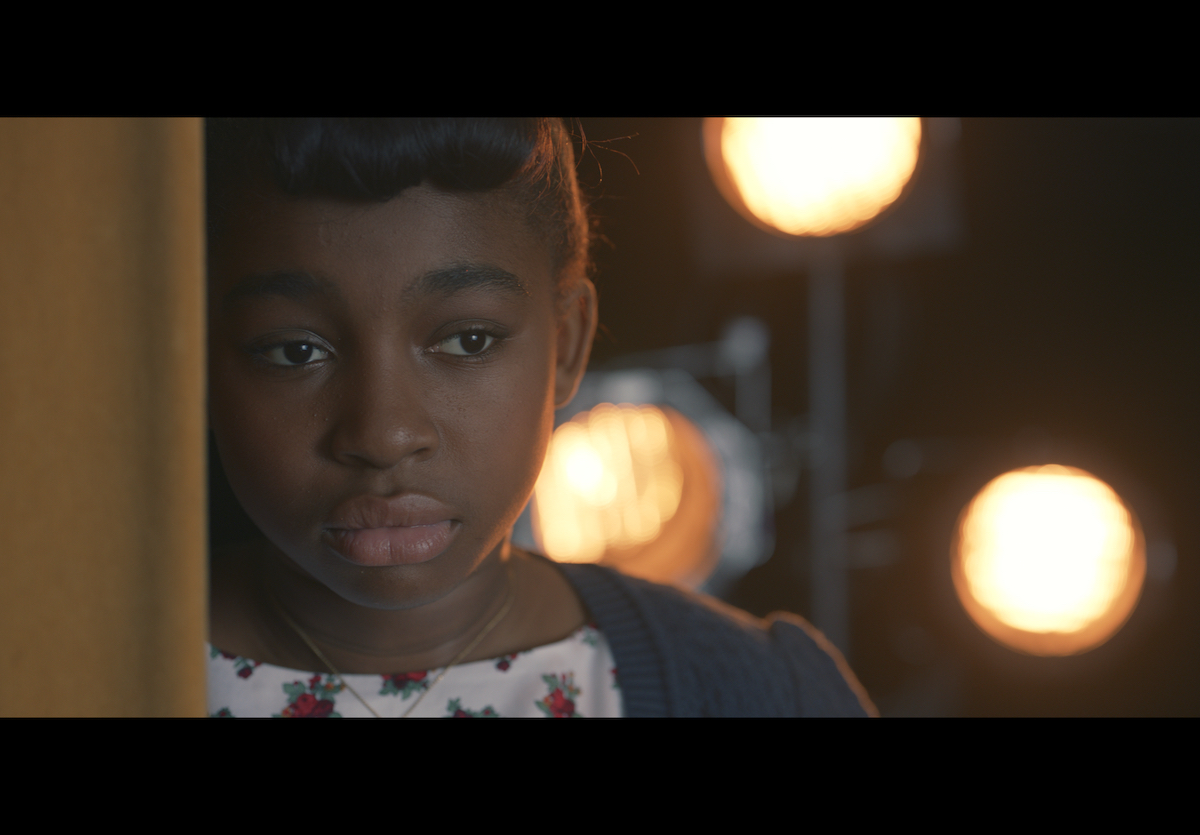
Shallow focus was key to the central visual concept McKnight took with the series. “We have a lot of dramatic content where I’ll give A-camera a chance to get right in there and engage up close with Cynthia,” he states. “[Ervio] has these big, expressive eyes, and that comes through in subtle nuances. Bless her heart, we play that camera three feet away – I did that with her on The Outsider, so she’s more comfortable with the approach.”
So-called “genius moments,” which bring viewers inside pivotal depths of the subject’s life, are central to the series. “I call them her ‘psychological moments,’ when we separate Aretha from the realm,” McKnight continues. “There are no ‘a-ha’ moments for her genius. It’s about something important emerging out of many conditions of her life,” such as watching her famous father, C.L. Franklin (Courtney B. Vance) preaching in church when she’s a child, or later, dealing with challenges from her husband, Ted White (Malcolm Barrett). “If we highlight a moment, it’s to be more in her head, through our lensing, composition and selective focus.”
Alba says McKnight creates a look “where we get so close, maybe even with a diopter, and alienate everybody out, at very minimum focus.” The shots require Fenno to be in constant communication with Alba, whom he describes as an “operator with no fear. If Michael sees something, he’s going in,” Fenno smiles. “And that means I always have to be ready. If there’s a look, a line that’s going to be spoken, be ready. There will be times where we’ll do a little bit of a push-in, and then Michael will take that next step, and get right in there, to get that look that Cynthia is showing. And you can see it in her eyes.”
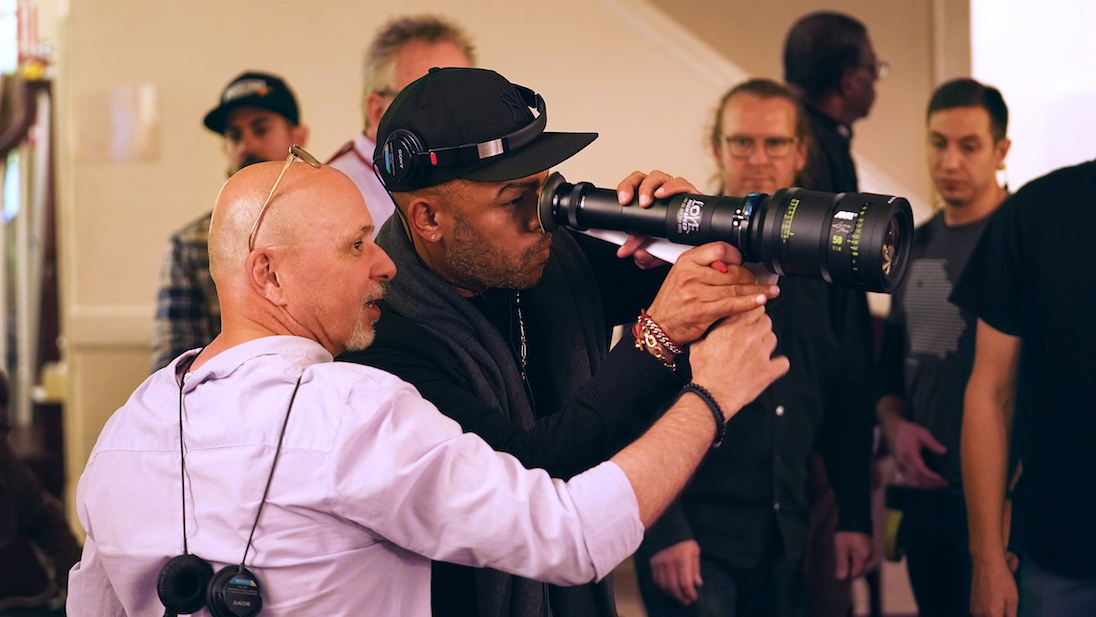
No doubt the combination of shooting with a shallow focus and wide lenses, along with an open aperture and sensor, make Fenno’s job that much more demanding. “When we move in, we like to open it up a little bit,” the AC continues. “We’ll use 40-, 47-, 58-millimeter – close to the face, and usually around 2.5 or 2.0, for these striking compositions that reveal the thought process of the character, thinking about her life, her childhood, or that moment to shine.”
McKnight will also sometimes put the LF on an Aurora LT or Mo-Sys L40 remote head to capture the “genius moments.”
“It’s not only a matter of not casting shadows,” Alba observes. “It removes the operator from the camera and lets the actors be in their space. There’s a lot less technical influence on them.” Alba communicates with Dolly Grip Evan Russell via HME headset, and if any correction is needed, “I can just whisper it to Evan, rather than making a disruptive hand gesture,” he adds.
Fenno is also away from the actors, standing beside Alba as he controls the remote head. “It’s fun because I get to be next to my operator. He can tell me, ‘Okay, we’re pushing in here.’ And I can hear what he’s saying to his dolly grips,” Fenno observes. “My second, Caitlin Trost, is also next to the camera, and she’s my eyes and ears on the set.” Alba says the shooting style impacts the way the story is told. “You don’t have three technicians right up in the face of an actress. There’s just a quiet camera that makes no noise, which pans and tilts a bit, and is not disruptive to performers during dramatic scenes.”
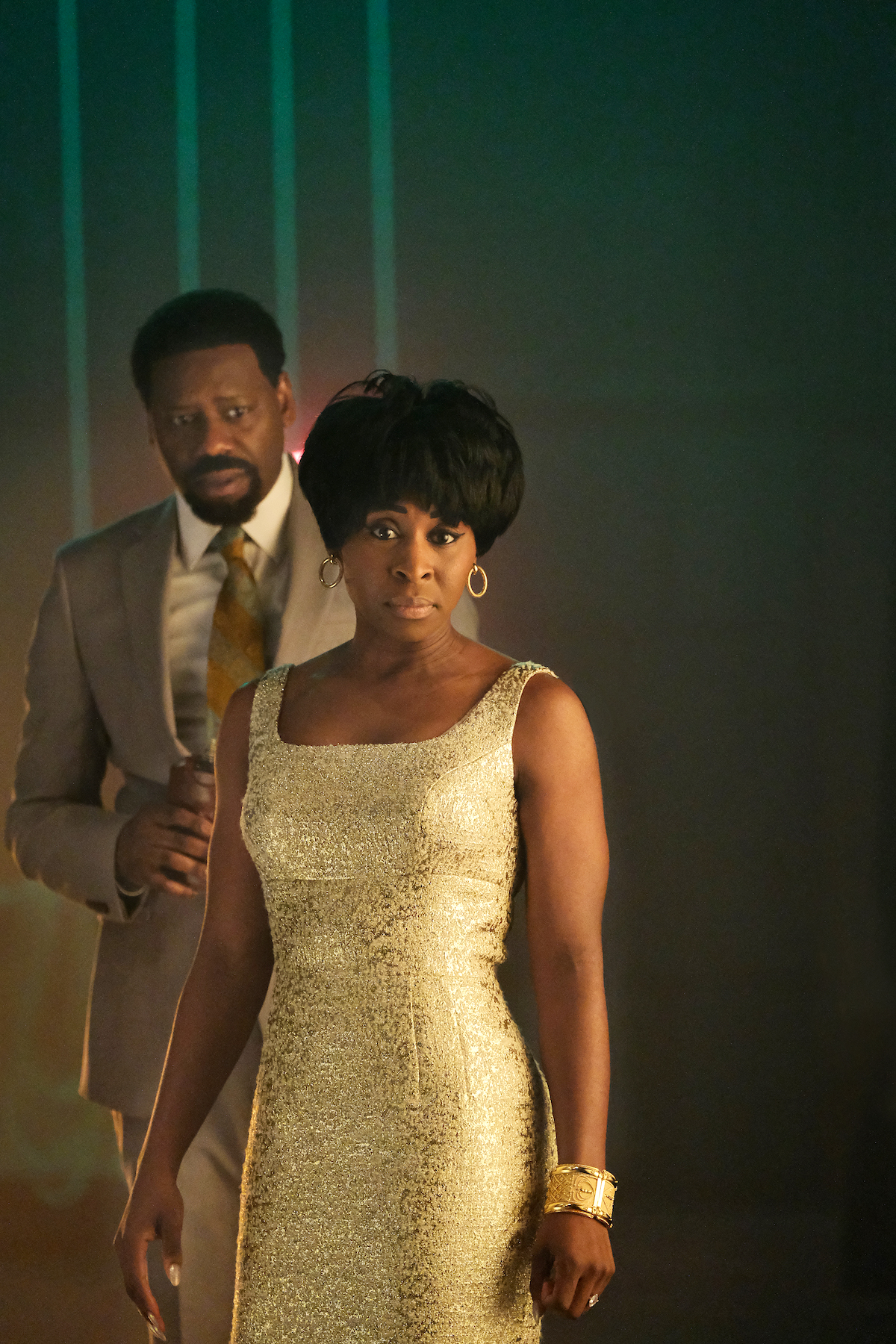
Lighting for key scenes, like when Erivo is at FAME Recording Studios in Muscle Shoals, AL, and discovering important musical moments at the piano, was achieved through a combination of elements by McCulloch using a Kino Flo Celeb 850 LED with a Chimera and snap grid. “We also have a Kino Flo FreeStyle 41, which is a big light that Kevin likes to use a lot, and we let it wrap her face and fall off,” McCulloch adds. “The longer lenses, the better the falloff – you can have out-of-focus lights in the background, and it’s just beautiful.” Lighting Erivo to take advantage of her extraordinary skin tone is almost effortless. “Her skin tones are fabulous,” he enthuses. “You could use a flashlight and she’d still look beautiful.”
To distinguish various phases of Franklin’s life, McKnight and Hemingway developed three separate LUT’s to use in on-set monitoring (in the absence of a DIT). “Anthony wanted to denote our different timelines very significantly, as we had done on another show,” McKnight reflects. “The audience knows, right up front, where they are, in time and space.”
Developed with Technicolor PostWorks New York senior colorist John Crowley (remotely, via T-VID, with McKnight in Atlanta), the LUT’s were created following test shooting by McKnight, rooted in a basic Alexa Capture LUT he’d created and been using for years. (They were also applied by dailies colorist Nels Carlson at Mango Color in Atlanta.)
The series unfolds non-linearly, with black-and-white scenes representing Franklin’s earlier life – 1942 to 1954 – intercut with current sequences, as the singer reflects on her roots. “It’s a warmer, nostalgic black and white,” Crowley explains, “not the modern crashed blacks and higher contrast – a smoother base.” For the “1967 LUT,” from 1954 to the early 1970s, Crowley says McKnight “had an idea for one with warmer tones. So there’s a hint of cyan in the shadows, to give it that vintage feel. And we’ve rolled off the highlights a little bit, to make it less video feeling.” The later 1970s look brings the saturation up and takes the blacks down a bit, playing more into the “jewel tones of celebrity,” McKnight adds.
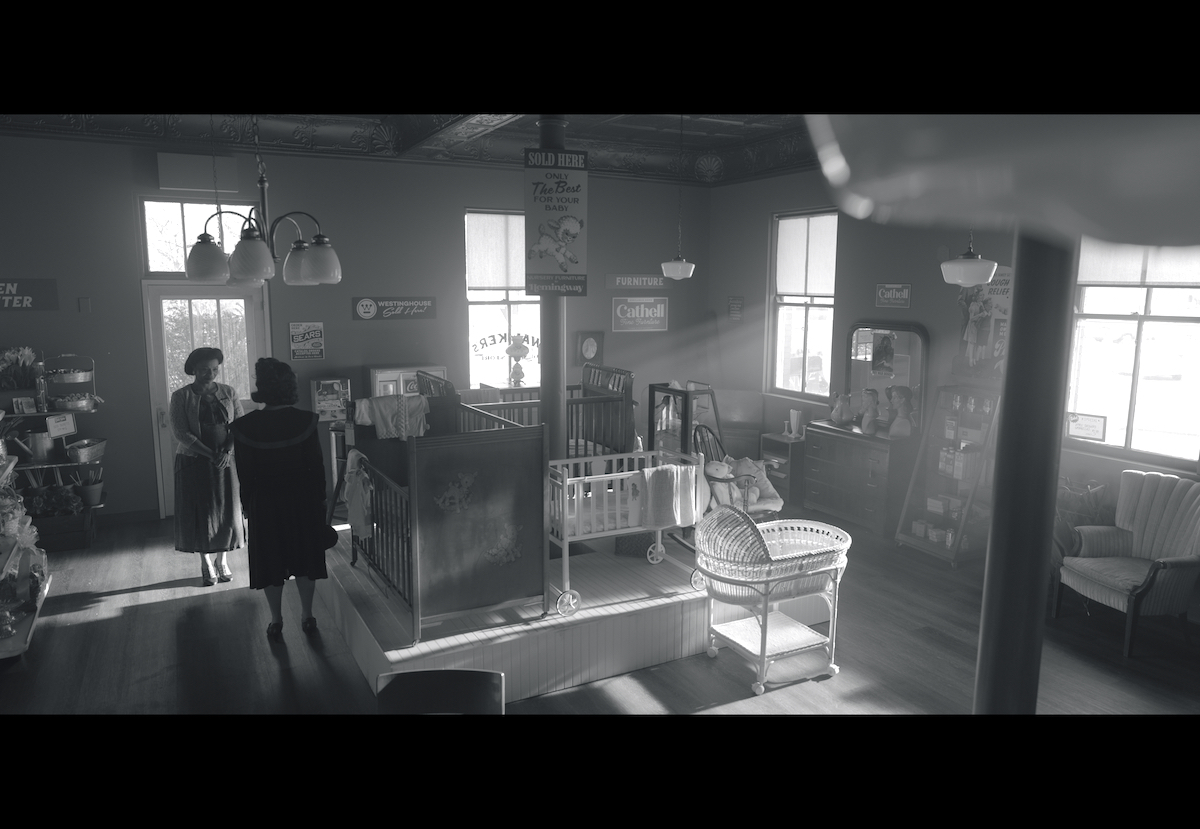
Genius: Aretha is no music documentary, but more, as McKnight insists, a “character study.” As such, the music scenes, reproducing both key concerts and recording sessions, are shot from Franklin’s emotional perspective.
“They aren’t free-standing performance pieces,” McKnight offers. “They’re intercut with shots about her struggles with her relationship with her husband and from her childhood, all of which are reflected in her performance.”
Scenes such as a show at Chicago’s Regal Theatre where Franklin was crowned “The Queen of Soul” (shot at the Fox Theatre as Hemingway noted above) contain period-accurate lighting. When McCulloch and McKnight scouted the theater (where the chief lighting technician had filmed many times), the in-house lighting crew was installing a new show. “I went back,” McCulloch recalls, “got their scheme, and we just went through it: ‘Okay, we want to keep this, this and this, and let’s eliminate this.’ They, of course, had LED’s and moving lights, which weren’t correct for the time – and we wanted to show the lights in our shots,” replacing them with traditional PAR cans and Lekos. While the Fox’s house crew, made up of IATSE 927 stagehands, did the installation, McCulloch brought in his dimmer-board operator, Patricia Tuckwiller, who connected her board to the system, providing smooth operation for the shoot.
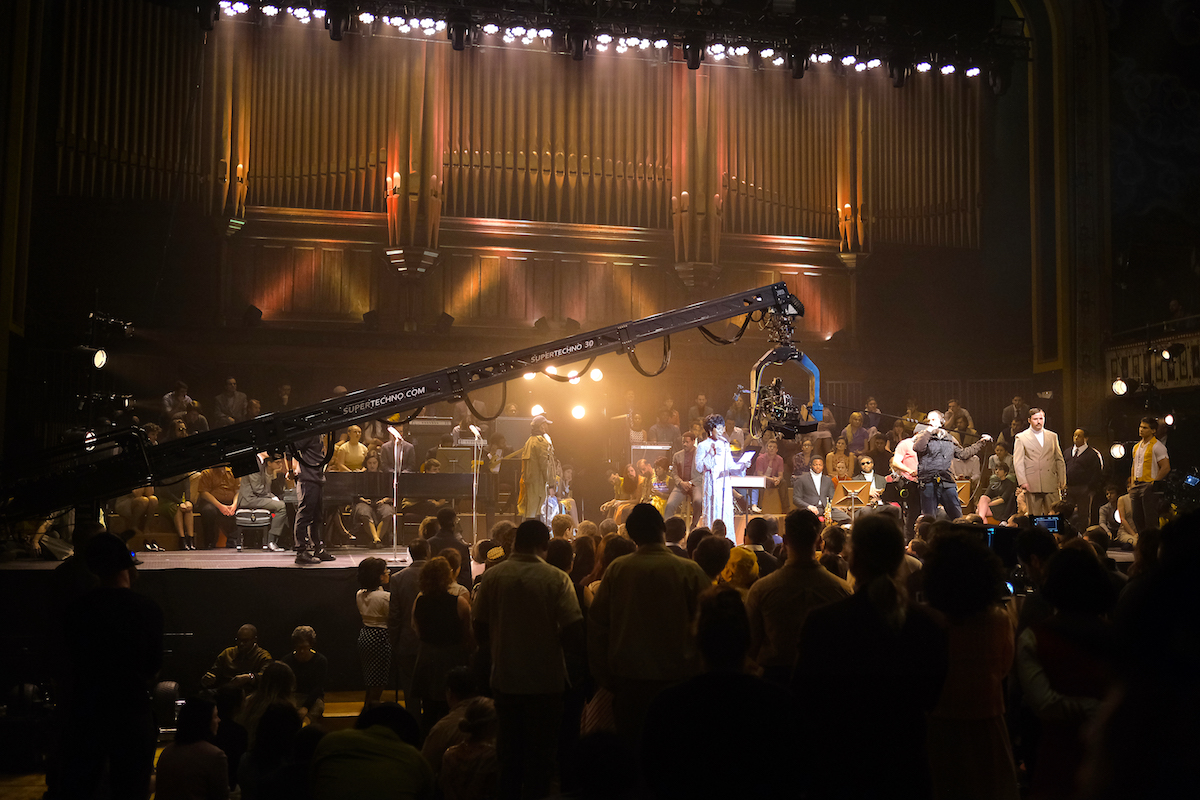
For Erivo’s onstage performances, Alba first filmed up close with Steadicam or handheld, before wider shots and coverage were captured by the two- or three-camera team. “I’ve done a lot of live TV, where you only get one take,” Alba describes. “For this show, there was a moment where you peak, usually by ‘take three,’ and everything comes together. Cynthia is a pro and will give it her all for as many takes as are required. But it’s hard for anyone to sing a song 25 times, from four different angles across a huge theater, and then six inches away from her face. So we try to do that, as a creative collective, to get those shots, right when everybody’s peaking, and then go back and get our coverage.”
Hartzel, using a Fujinon Premista 28-100 mm or 80-250-mm zoom lens, worked alongside his 1st AC, Ross Davis, to gather tons of great material for editorial. “Because I don’t know where I’m going – like an extra I see in the audience or reacting to a band member onstage – unless those beats are scripted,” Hartzel relates, “Ross and I are in constant communication. And I try not to get the same thing each take, to give the editor as much material as possible.”
The results are staggering, delivering not just Aretha Franklin’s music, but the essence of the performer’s soul to the audience. “Those were tumultuous times,” McKnight concludes. “So much was changing. All of that configured into who Aretha became, and how she emerged from it all. She truly was the Queen.”
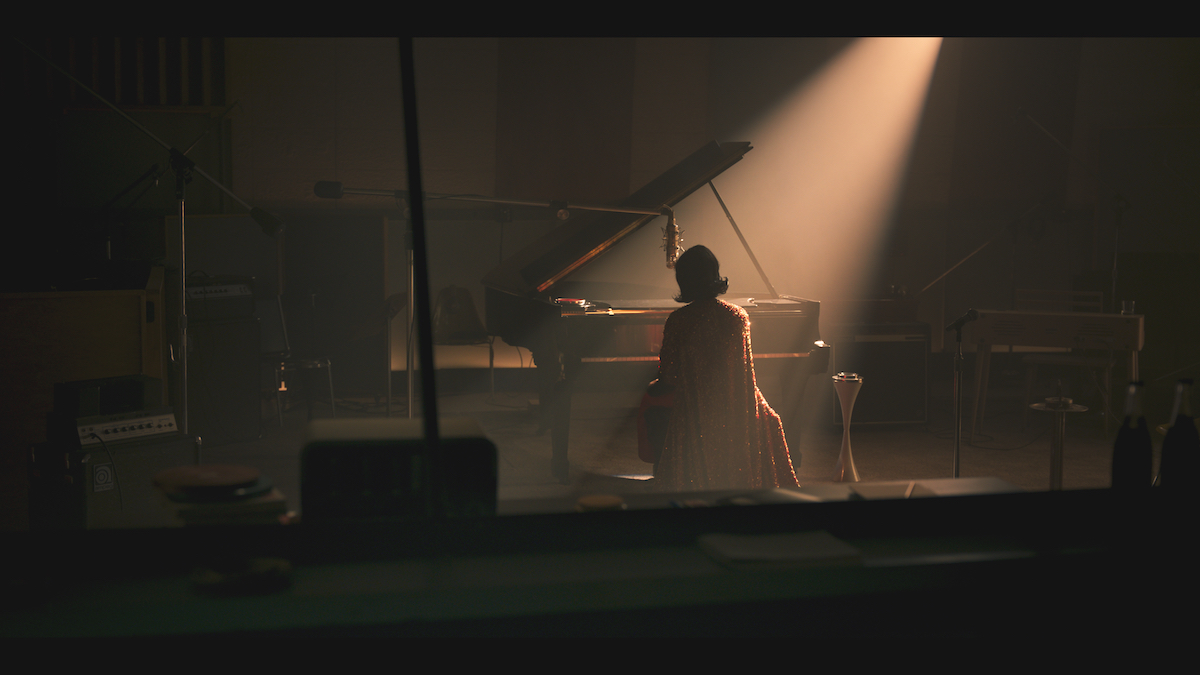
GENIUS: ARETHA (Season Three, Limited Series)
Director of Photography: Kevin McKnight, ASC
A-Camera Operator/Steadicam: Michael Alba, SOC
A-Camera 1st AC: Taylor Fenno
A-Camera 2nd AC: Caitlin Trost
B-Camera Operator: Michael Hartzel
B-Camera 1st AC: Ross Davis
B-Camera 2nd ACs: Nelson Moncada, Peter Johnston
Data Manager: Emily Gurley
Utility: Samantha Gardella
Still Photographer: Richard DuCree
Unit Publicist: Shelly Williams
